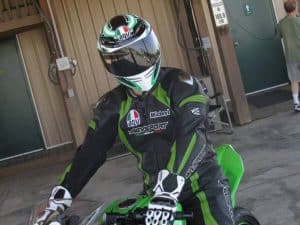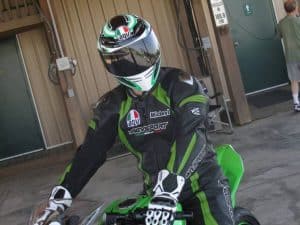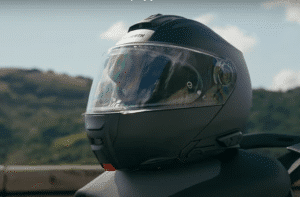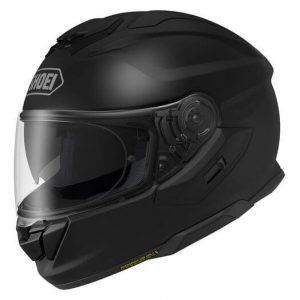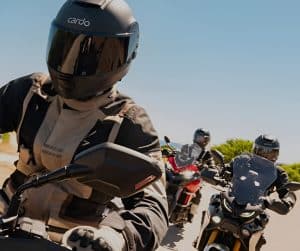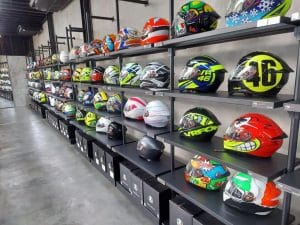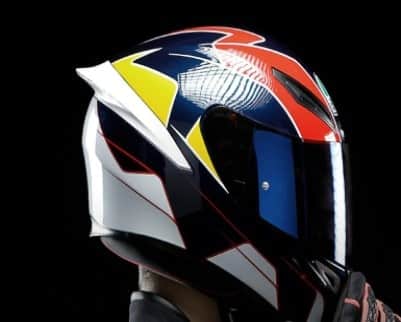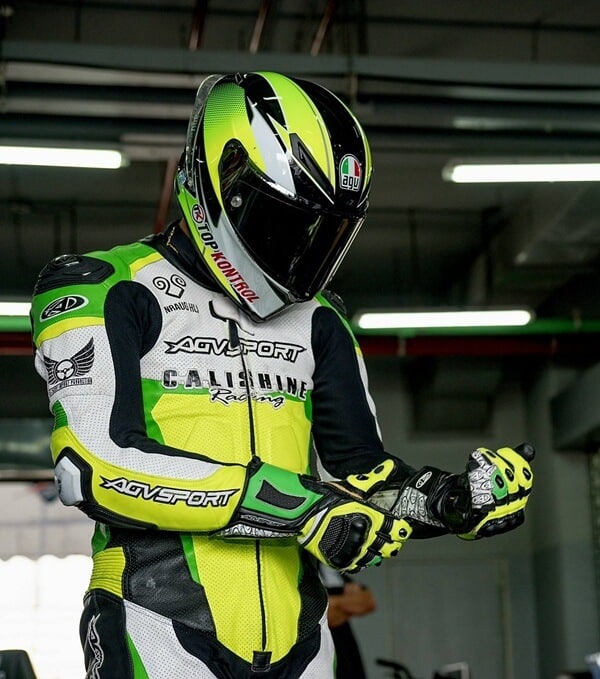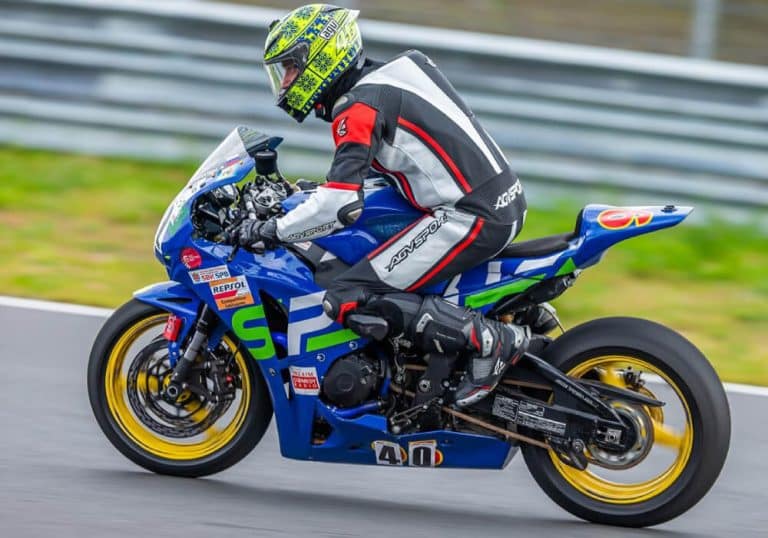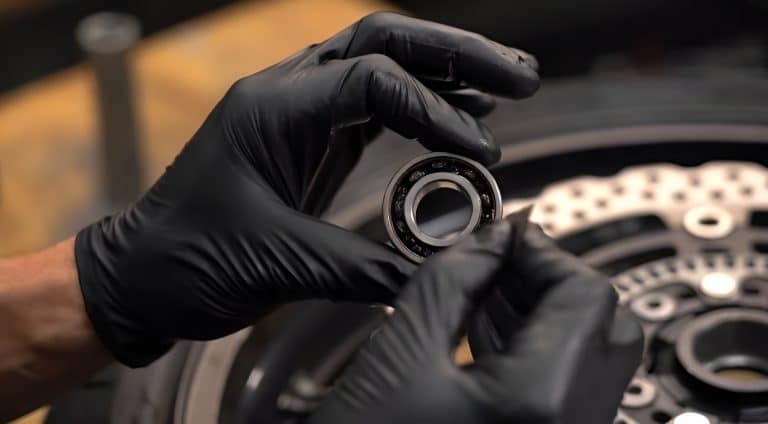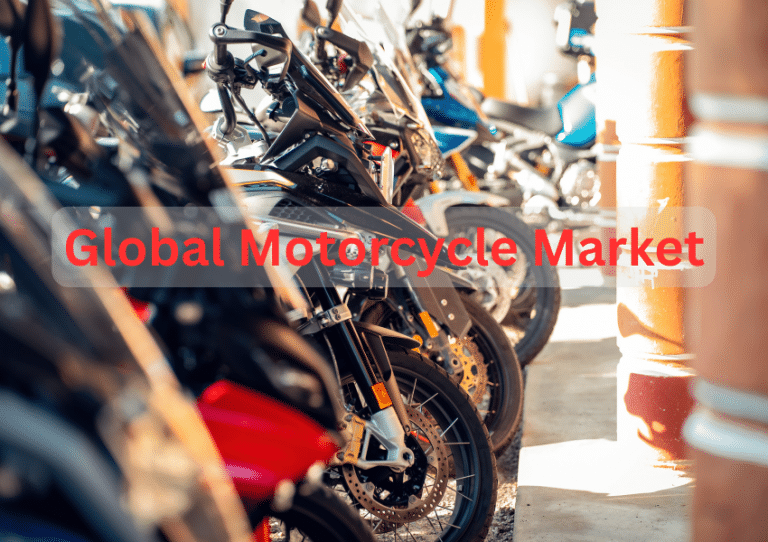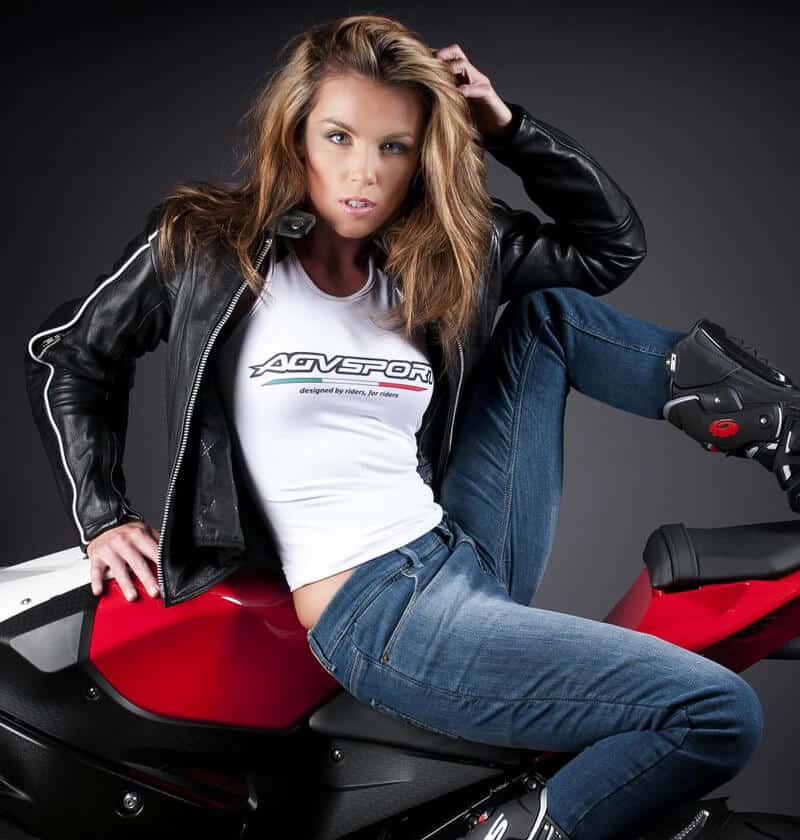Cafe racers are typically intended for solo riders with no room for a passenger due to the pronounced cowl and lack of pillion footpegs. But with a few thoughtful modifications, like replacing the entire seat-cowl combo with a longer brat-style seat and adding footpegs, you can accommodate your significant other for the ride. Granted, this will not sit well with OEM cafe racer purists, but I think the whole point in owning a flashy bike—especially for the younger generation that venerates them—is for style, artwork, or culture, and that includes occasionally picking up your date if you want to.
The resurgence of cafe racers tugs at people’s nostalgic sentiments, coinciding with the ongoing retro trend. Having been around the block a few times on motorcycles since the early 70s, I can tell you that there are two phases of the cafe racer craze: one happening before and one after when the mainstream manufacturers got involved.
In the era preceding the 1980s, the original cafe racers had space for two when the concept was still in its raw form and completely executed by individuals, a stark contrast to the versions we see today. Afterward, the post-80s manufacturer-influence availed entire bikes purpose-built for customization right of the mill. Today, modern off-the-shelf cafe racers (with a few exceptions) cannot carry two people, but you can change that, and it needn’t be that complicated.
Rafael Moreno Chacón, in his eBook, ‘How to Build a Café Racer? (DIY),’ radiates the profound satisfaction derived from the art of motorcycle customization:
“Café racer customization is an embrace of the thrill of creating masterpieces, where every turned bolt and design choice tells a story of passion and creativity.”
Top Accessories for Customizing Your Cafe Racer
Scroll to the right to find out where to buy, discover the best prices, and see if you might be lucky enough to get a discount from the sellers.
| Product Name | Category | Dimension | Check & Shop Now |
|---|---|---|---|
| Maxima Fork Oil | Best Motorcycle Fork Oil | 32 Ounces | RevZilla | MotoSport | Amazon |
| Kuryakyn Chrome Universal Magnum Quick Clamps | Best Motorcycle Versatile Footpeg Mounts | 1/2" Mounting Hole | RevZilla | MotoSport | Amazon |
| BikeMaster Engine Guard Footpegs | Best Motorcycle Passenger Footpegs | 1-Inch Clamps | RevZilla | CycleGear | Amazon |
| Motion Pro Shock Wrench | Best Motorcycle Shock Wrench | Fits 68mm and 87mm Lock Rings with an 8mm Notch | RevZilla | MotoSport | Amazon |
| Puig Racing Footpegs | Best Motorcycle Sport Footpegs | 0.2 Pounds | RevZilla | MotoSport | Amazon |
| Proxxon Allen Key Socket Set | Best Motorcycle Allen Key Set | 18 Pieces | RevZilla | Amazon |
| Vortex Replacement Rearset Footpegs | Best Motorcycle Custom Pillion Footpegs | 0.2 Pounds | RevZilla | MotoSport | Amazon |
| Stockton Fork Oil Level Gauge | Best Motorcycle Shock Oil Level Gauge | 0.3 Pounds | Amazon |
Two-Up Riding: 6 Easiest Ways to Make a Cafe Racer Passenger-Friendly
The accurate steps to modify your cafe racer for a pillion depend on the bike you have. Some like the BMW R19 Racer, have a very short solo seat while others like the Royal Enfield Continental GT 650, have a more generous bench-type seat and an even longer subframe, allowing enough room for a custom passenger seat and footpeg amenities.
I would also consider the type of seat I wish to install versus the mounting position, which I have found to be a make-or-break decision with these types of projects. Of course, the practicality of each setup partly depends on the intended use of the bike. It’s logical to make room for the pillion and the rider to sit comfortably with access to the controls, but also remember that cafe racers are not meant to be comfortable commuters for longer rides.
1. Remove the Seat-Cowl Combo to Replace It With a Brat-Style Flat Seat

The bump, also known as the bum stop, seat cowl, or tail cowl, has been a unique identifier of cafe racers, but you can now join the new crop of builders and riders by ditching the solo seat with cowling for a brat-style seat, which is flat and roomier. While the pronounced bump was introduced mainly by the automakers so that the bikes looked more like their sport bike counterparts, it has no serious aerodynamic implications outside of the racing arena. On the contrary, it’s the cafes that birthed the mean modern beasts we love today.
And Lucas Pagani, an adept builder and creator of the phenomenal Euforia, a Ducati 996-based neo café racer, eloquently captures the impact of café racers:
“Cafe racers were made to be fast and brutal. Unwittingly those reckless rockers of the 60s altered the course of motorcycling and bike development forever. I strongly believe that we wouldn’t have the modern sport bike as we know and love it, if they hadn’t gone and showed the manufacturers what was wrong with standard issue bikes.”

When choosing a new seat for your mod, take note of the dimensions of your subframe versus the size of the seat that you get. There are also a few designs ranging from materials such as leather, and PU leather to vinyl and different stitching patterns like tuck n’ roll and diamond stitching that also contribute to the final look of your custom ride.
2. Remove the Tail Section to Extend the Seat

Again, depending on the make and model of the motorcycle you choose as the base for your two-up cafe racer custom, you can deconstruct the subframe and extend it by up to 8 inches to allow room for a pillion seat. It’s a common trend nowadays to remove the rear fender and keep the tail as minimal as legally possible because the “rule of humps” is not set in stone.
I prefer bolt-on subframe assemblies because they are easier to get right, and the conversion is easily reversible without compromising on the integrity of the rest of the chassis.
3. Make the Cowl/Hump Removable or Completely Remove It

Some cowls are immovable and cannot be removed at any time as you desire. In these instances, you can choose between substituting the complete seat-cowl combination with an elongated brat-style seat or adapting the cowl to allow for occasional removal or complete elimination. Irrespective of your preference, adding cushioning to the exposed section becomes imperative.
But caution should guide you throughout this process. Initially, the tail cowl or seat bump served to secure the rider in position, simplifying their concern to gracefully maneuver the bike through road twists. In today’s context, the role has expanded. Beyond its aesthetic function, certain manufacturers utilize the non-removable cowl to cleverly conceal components such as batteries or other electrical elements within your custom bike.

Nonetheless, you may need to relocate some electronics such as the TCI or CDI system which aren’t too difficult to tuck somewhere else on the bike by rearranging some cabling. The elephant in the room is the power brick which runs your lights, dash, and the starter motor if you are using an electric start. I’ve seen builders who can get rid of the battery altogether with a smaller displacement engine where a kick start will suffice. Lithium batteries for motorcycles give you a higher power density and hence a smaller pack than leaded batteries for the same Cold Cranking Amps (CCA) rating.
Removable tail cowls are aesthetic rather than a requirement on cafe racers, and therefore, you can implement a removable one where the seat cushion extends beneath providing a modular seat design. Yet, to switch between modes, you might have to tuck a small Allen wrench somewhere on the bike, which can also be useful for adjusting your mirrors if you pick the right size of bolts.
4. Buy a Cafe Racer With a Removable Cowl

Of course, the manufacturers are quick to capitalize on the trend, and it’s no wonder the king of modern cafe racers, Triumph, makes the Thruxton with removable cowls, allowing you to stow a pillion and still look awesome when solo. In a similar vein, the Bavarians present the sophisticated R NineT 100 Years, fitted with a monoposto cafe tail cowl and an extensive catalog of 719 customizable items. Meanwhile, Royal Enfield caters to varying preferences by providing the Continental GT with and without the rear seat cowl, ensuring a diverse range of choices for enthusiasts.
5. Add Passenger Footpegs

Our next logical step after providing room on the bench for our ride-along is to make another set of foot rests so non-biker passengers do not step on your exhaust and melt a shoe or skin!
Motorcycle footrests come in three primary types: adjustable, folding, and fixed. For cafe racer modifications, I personally find foldable and adjustable foot pegs to be more suitable because you can easily tuck them away when riding solo, maintaining that timeless and sleek appearance.
Moreover, there are specific kits tailored to certain bike models, as well as universal foot pegs for cafe racers that clamp or bolt onto nearly any subframe with minimal adjustments needed.
6. Buy a Cafe Racer With a Longer Seat

If you’re not inclined towards modifications, opting for a cafe racer equipped with an extended seat to accommodate a pillion could be your solution. The Royal Enfield Continental GT 650 serves as a prime example.
You can choose to purchase a removable cowl separately if you want to maintain the cafe racer style. Most removable cafe racer seat cowls for sale are typically plastic and unpainted, allowing you to add your choice of paint to match your bike color scheme. Take note of the dimensions provided for each item as you may need to trim some excess to get it to sit snuggly.
But given that there aren’t numerous tail cowls readily available for cafe racers on the market today, you might find yourself in a position where creating — from a metal sheet or fiberglass if you possess smith blood — becomes necessary. In such cases, I’d like to provide you with a straightforward guide to assist you in the process.
7 Steps to Create Your Own DIY Fiberglass Tail Cowl for a Cafe Racer

- Gather the Supplies: You will need foam insulation, a rasp file or blade, coarse sandpaper, a small panel saw, micro scale (a kitchen scale will do), measuring cups, duct tape, paintbrush, 1kg fiberglass resin + hardener, 1 meter fiberglass matting, grinder or cut off wheel, contact adhesive, safety glasses or goggles and dust mask.
- Shape Your Foam Tail Foam: This is the most involving part of the process. Start by securing the foam to the flat surface on the frame using masking tape then process to cut and shape it on the back and sides to your liking with a rasp file. Finish off the edges with a sandpaper for a refined final mold.
- Wrap It Up: Tape the foam to cover its entire surface with masking tape and duct tape. Use a second layer to prevent any of the fiberglass from sticking to the foam mold.
- Prepare the Fiberglass: Now, place the mold on a bench and cut to size the required fiberglass matting. Aim for 5 to six layers of the material for a strong and durable cowl. Remember to handle fiberglass with care and always work with protective gloves and eyeglasses.
- Apply the Fiberglass: Mix the resin and catalyst as per the usage directions on the pack; typically, you will need 2-3 parts of catalyst for 100 parts of the resin. Now start to apply the mold layer by layer waiting 5 to 10 minutes in between layers for each layer to partially set.
- Cure and Trim: After about 3 hours and depending on the type of epoxy you are using, the shell will be ready to lift from the mold for trimming and sanding until you are happy with the smoothness and fit of the end product.
- Mount the Fiberglass Cowl: Choose a mounting method, such as M4 pan head screws, riv-nut fittings, triangular placed screws, or welded thread, and make supports to secure the new cowl to the frame.
The Pros and Cons of Modifying Your Cafe Racer for Two-Up Riding

As with every other difficult decision you are faced with along your motorcycling adventure, there is an upside and downside to every little addition or subtraction for that matter.
First, the pros:
- Improved Versatility and Practicality: On the bright side, you get to bring the missus along for the ride, and the more the merrier, right? The shared moments are priceless plus it allows you to ride the bike more frequently even when going out on a date or some other destination together, so it’s a win-win.
- Personalize Your Ride: Changing the seat configuration on your motorcycle is one of the easier mods that do not require prior technical knowledge. You get to add a personal touch to your old timer or neo cafe.
- Longer Rides: While making it more comfortable for two, you may end up making it roomier and more comfortable for longer rides thanks to wider seats with better cushion. Carrying a pillion on stiffer suspension may have a similar effect.
And here are the cons:
- Aesthetic Impact: The biggest con right off the bat is losing the classic cafe racer look where the rear bump follows a contour with the tank. Purists see such mods as sacrilege and, therefore, making radical irreversible alterations could lower the resale value of your bike.
- Poorer Handling: The weight distribution changes when bringing along a passenger, and this can affect the overall handling characteristics of the bike, especially when negotiating corners.
- Pillion and Rider Discomfort: There is barely enough room on most cafe racers for two, given the relatively short wheelbase, which means a certain level of discomfort for you and your pillion for longer rides regardless of how successful the makeover turns out.
In the end, the decision to modify your cafe racer for two-up riding depends on your personal preferences, riding habits, and the balance you wish to strike between maintaining the bike’s original style and adding practicality for passenger use.
Michael’s Summary and Conclusion
Can two people ride a café racer? From my experience dating back to as early as 1970, cafe racers have undergone a significant transformation since their early days. Back when I lived in Paris, France as a teenager and first started riding motorcycles on the streets, creating a cafe racer was a whole different ballgame. In those times, the cafe racer movement was born out of a necessity for custom sport bikes because the motorcycle market lacked dedicated sport bike options.
Riders like me were focused on crafting street-legal motorcycles with the performance characteristics of road racing bikes. We’d tinker with clip-on handlebars rear sets and upgrade exhaust systems for improved performance and that signature roar. It was all about functionality and race-inspired aesthetics. These early cafe racers often featured unique touches like cowling or tail sections behind the seat, setting them apart from the conventional manufacturer-produced motorcycles of that era.
Nowadays, the situation is reversed; motorcycles often come with a cowling or tail section, and those creating a cafe racer often shorten or entirely remove it to visually achieve a short seat over the rear wheel, with very little there. This transformation reflects how the cafe racer scene has evolved into an era of personal expression and creativity, where riders embrace the challenge of reimagining modern machines into intriguing, minimalist works of art and culture.
Unfortunately, this makes it unsuitable to accommodate two people. But you can easily address this by modifying your cafe racer to carry a passenger if your current one doesn’t serve that purpose. Alternatively, you can purchase one from the manufacturer with a longer seat capable of carrying a passenger.
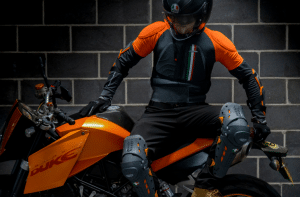 I've diligently categorized my motorcycle gear recommendations into all available categories, with the aim of providing you with a comprehensive analysis that showcases the absolute best options for all your needs. These items are the culmination of in-depth research, extensive testing, and personal use throughout my vast experience of 50+ years in the world of motorcycling. Besides being a passionate rider, I've held leadership positions and offered consultancy services to reputable companies in over 25 countries. To See Top Picks and the Best Prices & Places to Buy: Click Here! |
FAQs — I Have the Answers!
Q: Can Two People Ride a Cafe Racer?
The short answer is yes; cafe racers can fit two people with some modifications, of course. You will need to remove the seat-cowl combo and replace it with a longer brat-style flat seat, in addition to adding passenger footpegs.
Q: Is Café Racer Single Seater?
Yes, cafe racers are typically designed as single-seaters, but there are exceptions like the Royal Enfield Continental GT 650, which features a longer seat capable of accommodating a passenger.
Q: Can Café Racer Be Used for Touring?
No, café racers are not well-suited for touring due to their characteristic crouched riding position. The act of gripping onto low, narrow handlebars can make you vulnerable to flipping over when encountering even the slightest obstacles.
Information for this article was partially sourced and researched from the following authoritative government, educational, corporate, and non-profit organizations:
- Motorcycle Accident Resource
- Ducati
- Triumph Motorcycles
- BMW Motorcycles
- Husqvarna Motorcycles
- Royal Enfield
LPP/A

